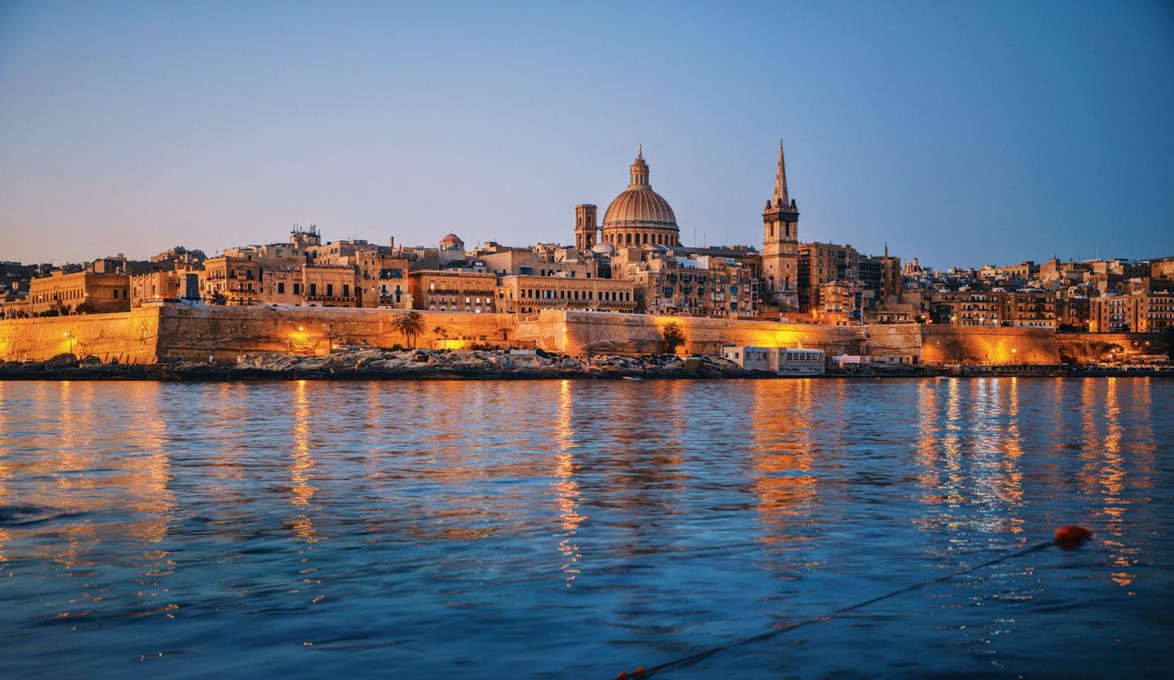Why Malta Is a Must-Visit Destination for Art and Design Lovers
The tiny Mediterranean island is punching way above its weight with prehistoric ruins, Caravaggio masterpieces, and a contemporary art space on the horizon

Historically one of the most coveted islands in the Mediterranean for its militarily strategic location between Sicily and Libya, Malta is still highly sought after today, but now as a travel destination famous for its cultural landmarks. The deeply Catholic, 122-square-mile island boasts a stone church for every day of the year. Two sumptuous Caravaggios—The Beheading of St. John the Baptist and St. Jerome Writing—hang in one of the most ornate cathedrals in Christendom, St. John’s, in the capital city of Valletta.

But a reverence for tradition hasn’t arrested Malta’s architectural progress. In 2009, Italian architect Renzo Piano began a six-year project to build a heroically sculpted city gate and plaza leading into the walled Renaissance capital. The modern bridge opens onto his monumental parliament, which the master designed with digitally machined stone that forms corrugated surfaces patterned for chiaroscuro effects of light and shade. Walls built in the warm stone seem to incandesce in the Mediterranean sun. In the charming nearby suburb St. Julian’s, the late architect Zaha Hadid designed a 33-story apartment tower, “the Twist,” which seems to acrobatically change directions mid-height.

Art, too, is a constant in Malta. Last fall, New York sculptor Michele Oka Doner debuted The Palm Goddess for Malta atop the ruins of an entrance portico to the old neoclassical opera house, where Piano transformed the shell of the building, bombed out in World War II by German aircraft, into an outdoor theater. “The Palm Goddess embraces the figurative tradition of the ancient past, speaking the visual language of priests, goddesses, Earth Mothers, and shamans, the mortal and divine,” says Oka Doner, whose sculpture will eventually travel to the gardens of Malta International Contemporary Art Space (MICAS), a new museum of contemporary art scheduled to open next year.

The cavernous modernist structure is being built within the city’s medieval ramparts, themselves constructed into the more ancient stone walls of a Roman port, itself formed from the natural cliffs. “The museum, which incorporates reclaimed materials like granite from the site, will complement rather than overpower fortification walls framing the property,” says Francis Sultana, a member of the museum’s board and a Malta native. The London-based designer is reconceiving the nearby Corinthia Palace hotel’s 1960s-style annex in an evocative reinterpretation of the original art nouveau villa.
An archipelago that includes the smaller, adjacent sister island of Gozo, Malta has been occupied since 5000 B.C. A half dozen megalithic temples, older even than Stonehenge and the Giza pyramids, populate the islands. Later, waves of Phoenicians, Carthaginians, Greeks, Romans, Byzantines, Arabs, and Normans came, saw, and conquered. But it was a sect of knights driven out of the Holy Land in the 13th century, then Rhodes in the 16th by the Ottoman Turks, who transformed the country. Retreating to the island, the monk warriors—known as the Knights of Malta—built a fortified city gridded over a hilltop, forming perhaps the first planned city in the West.

Block after block of palaces, villas, shops, and restaurants roll with the hilly contours of Valletta’s peninsula, framing long views out to sea between stone façades sculpted with pilasters and pediments. Many of these properties have been converted into hotels; some are still occupied by old noble families, and others, by urban sophisticates who have remodeled the buildings as evocative getaways immersed in time and history.

The country’s most immediate cultural overlay is Britain, which continues to exert its influence after Malta peacefully won independence in 1964. Working with a rich historical legacy in the context of its own international traditions, the Republic of Malta is pursuing a vision of measured progress, importing global talent to develop the country as a creative destination, bringing it into the 21st century with civility and grace.
A version of this article first appeared in print in our 2023 Summer Issue under the headline “Small Wonder.” Subscribe to the magazine.